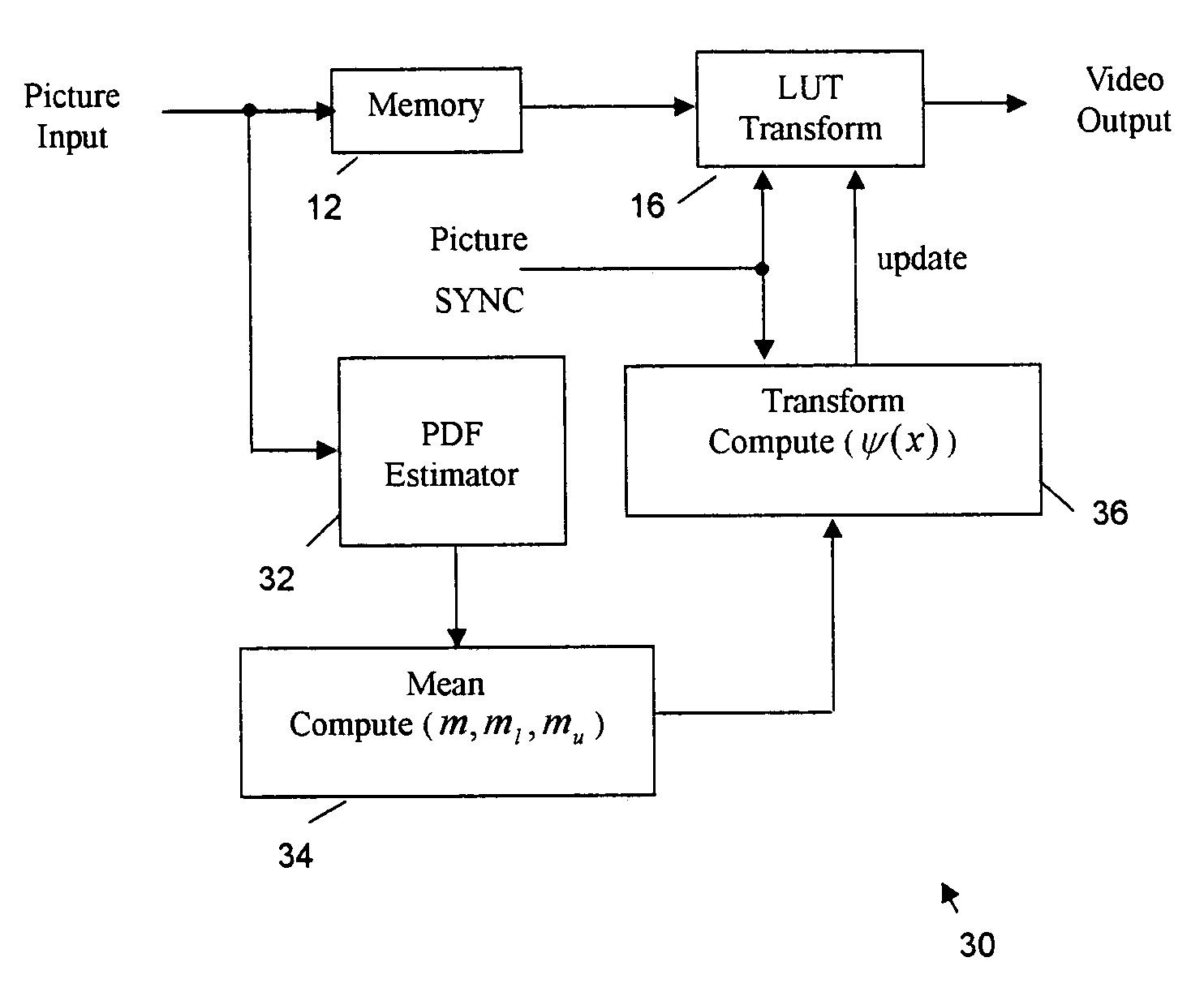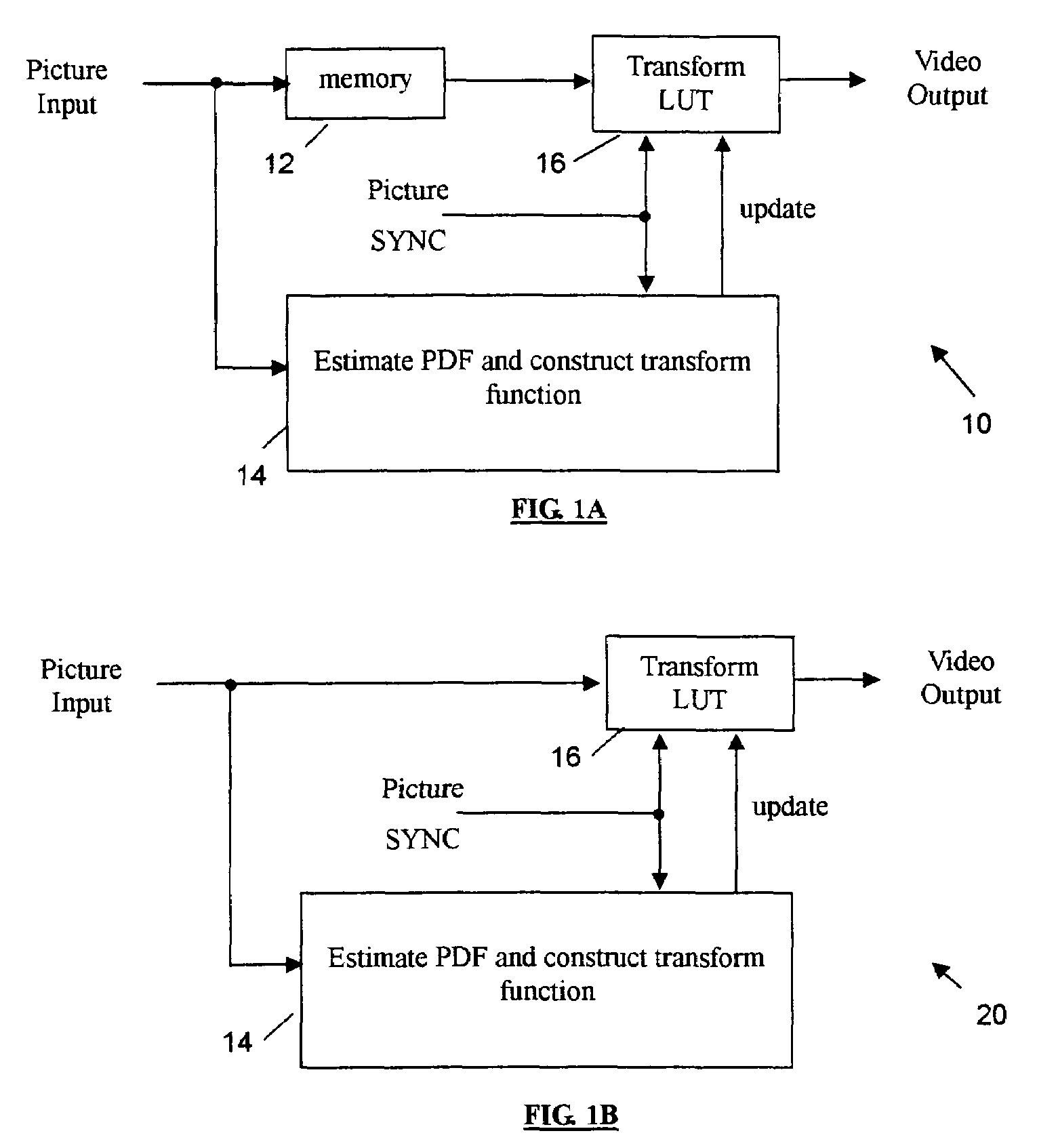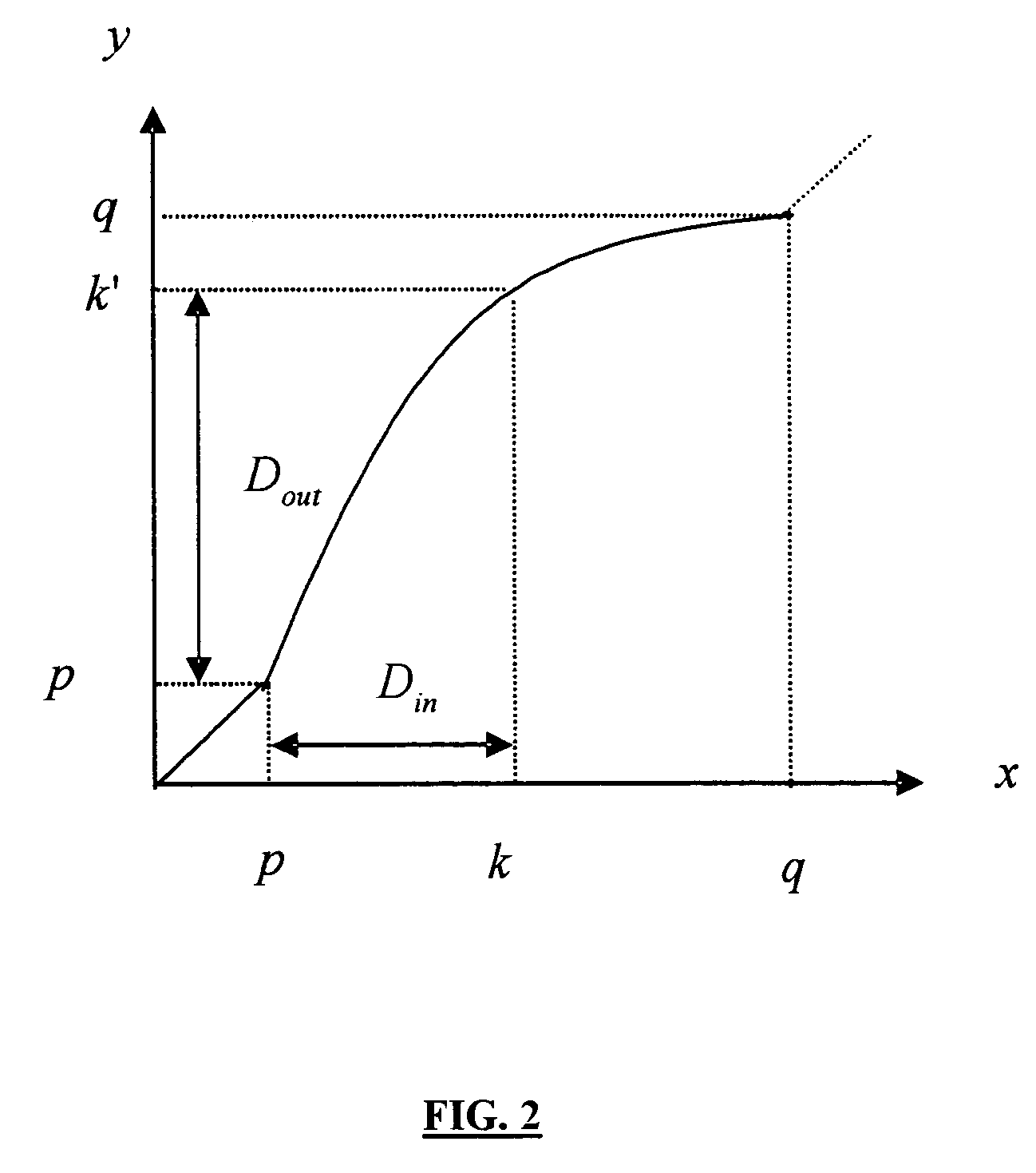Adaptive contrast enhancement method for video signals based on time-varying nonlinear transforms
a nonlinear transformation and contrast enhancement technology, applied in the field of video processing, can solve the problems of difficult quantification of enhancement criteria, limited application to still images, and only enhance video quality in digital video systems, and achieve the effect of enhancing mainly the contrast of input and output signals
- Summary
- Abstract
- Description
- Claims
- Application Information
AI Technical Summary
Benefits of technology
Problems solved by technology
Method used
Image
Examples
Embodiment Construction
[0023]While this invention is susceptible of embodiments in many different forms, there are shown in the drawings and will herein be described in detail, preferred embodiments of the invention with the understanding that the present disclosure is to be considered as an exemplification of the principles of the invention and is not intended to limit the broad aspects of the invention to the embodiments illustrated.
[0024]As noted above, an Adaptive Contrast Enhancement (ACE) method according to the present invention specifies the characteristics of a time varying video sequence and performs a nonlinear transform over the input video sequence to enhance mainly the contrast of the input. Referring to FIG. 1A, an example architecture of an ACE apparatus (device) 10 implementing an example ACE method according to the present invention, is shown. In a functional block 14, a probability density function (PDF) of a time varying input video sequence is computed and then some predetermined vide...
PUM
 Login to View More
Login to View More Abstract
Description
Claims
Application Information
 Login to View More
Login to View More - R&D
- Intellectual Property
- Life Sciences
- Materials
- Tech Scout
- Unparalleled Data Quality
- Higher Quality Content
- 60% Fewer Hallucinations
Browse by: Latest US Patents, China's latest patents, Technical Efficacy Thesaurus, Application Domain, Technology Topic, Popular Technical Reports.
© 2025 PatSnap. All rights reserved.Legal|Privacy policy|Modern Slavery Act Transparency Statement|Sitemap|About US| Contact US: help@patsnap.com



